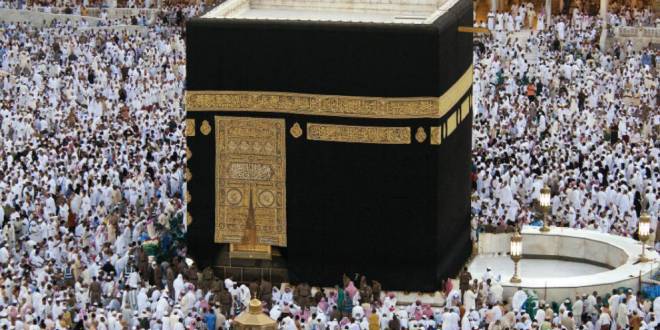The Hajj pilgrimage to Mecca, Saudi Arabia is a five-day ritual. It’s an annual pilgrimage to Mecca for millions of Muslims from all over the world. What is the Hajj? The Hajj is one of the five pillars of Islam, and it is a mandatory religious pilgrimage that every physically and financially capable Muslim must undertake at least once in their lifetime. The pilgrimage is centered around the holy city of Mecca, located in Saudi Arabia.
The Hajj, one of the world’s largest gatherings, begins two days before Eid ul Adha.

The dates of the pilgrimage are confirmed by the Hajj authorities in Saudi Arabia, based on the sighting of the moon.
On the third day of Hajj each year, Muslims celebrate Eid al-Adha, Islam’s holiest festival.
In the Islamic calendar, Hajj begins on the eighth day of the Dhu al-Hijjah lunar month and ends on the 13th day of Dhu al-Hijjah. The religious rituals of the Hajj pilgrimage, however, can be completed in five days.
The Hajj re-enacts the actions of the Prophet Muhammad PBUH in his “farewell pilgrimage” in AD 632 and is a central pillar of the Islamic faith meant to cleanse the faithful of sin and bring them closer to Allah.
Hajj is a deeply significant religious journey for Muslims, as it commemorates the actions and sacrifices of the Prophet Ibrahim and his family, as well as the acceptance of their devotion by God. It is seen as an opportunity to cleanse the soul of sins and seek forgiveness.
To undertake the Hajj, a Muslim must meet specific prerequisites, including being mentally and physically able to perform the pilgrimage and having the financial means to cover the journey’s expenses.
Rituals: The Hajj pilgrimage consists of several rituals, including:
- Ihram: Pilgrims must don a special white garment, the ihram, symbolizing purity and simplicity. Men wear two pieces of unstitched white cloth, while women wear plain, modest white clothing.
- Tawaf: Pilgrims circumambulate the Kaaba, the black cubic structure in the center of the Masjid al-Haram, seven times in a counter clockwise direction.
- Sa’i: Pilgrims walk seven times between the hills of Safa and Marwah, which is a reenactment of Hagar’s search for water for her son Prophet Isma’il.
- Arafat: Pilgrims gather at Mount Arafat, where they stand in prayer and supplication from noon until sunset, seeking God’s forgiveness and mercy.
- Muzdalifah: Pilgrims spend the night under the open sky at Muzdalifah, where they gather pebbles for the next ritual.
- Stoning of the Devil: Pilgrims stone three pillars representing Satan, symbolizing the rejection of evil. This is done in Mina, and the ritual occurs over three days.
- Sacrifice: Pilgrims offer a sacrificial animal, usually a sheep, to commemorate the willingness of Prophet Ibrahim to sacrifice his son Prophet Isma’il as an act of obedience to Allah.
- Tawaf al-Ifadah: After the stoning of the devil, pilgrims return to Mecca and perform another tawaf around the Kaaba.
- Farewell Tawaf: Before leaving Mecca, pilgrims perform a farewell tawaf, which is a final circling of the Kaaba.
Hajj is a sacred journey that holds immense importance in the lives of Muslims, and it is a unique experience that unites millions of people from diverse backgrounds in their devotion to Allah.
Learn The Six Kalimas – Transliteration, English Translation
Join us today! and learn about the Hajj and other pillars of Islam.

